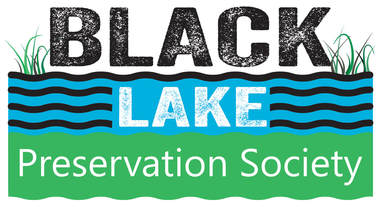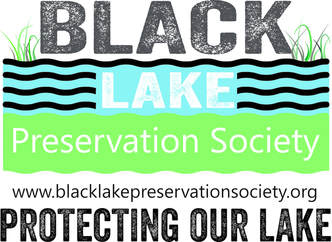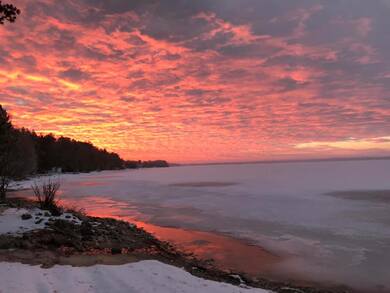Thank you for visiting the website of the
Black Lake Preservation Society
2023 Outlook
Click the button below to learn more about the harmful algae blooms (HABs) that we experienced late summers of 2020 and 2021
10 Minute Video re: our 12 month Outlook:
|
Who We Are
Our sole MISSION is to protect and preserve the ecology of Black Lake, its tributaries and watershed through advocacy and program development; and to operate in a transparent, professional and neighborly manner. In addition, we will partner with like-minded environmentally concerned institutions and work to cultivate relationships with local, State and Federal entities in order to further our goals. Our mission and goals are critical to maintaining Black Lake’s natural features, ensuring its sustainability, and the investment in and enjoyment of our lake and its watershed. Our Guiding Principles are:
Pursuant to these guiding principles, our organization is really about starting the conversation and initiating actions around topics that impact our ability to preserve our lake; the same topics being addressed by organizations around our area, our state, and through the Midwest. Let's Keep Black Lake Natural! |
|
|
BLPS 2022 Key Achievements:
· LAKE LEVEL MANAGEMENT: Completed the federal filing of our detailed analysis and recommendations for the renewal of the FERC license regulating the Alverno Dam Hydroelectric plant. Gathered legal advice and confirmation of our positions. Filed our feedback regarding the state’s environmental position regarding the license renewal that is required by the Clean Water Act.
· INVASIVE SPECIES PREVENTION: Became an active member of the Huron Heartlands CISMA (Cooperative Invasive Species Management Area) and continued our formation and leadership role of the CRISP (Cheboygan Region Invasive Species Partnership) collaboration among area lakes. These organizations elevate and standardize area lake association actions to slow or prevent the spread of invasive species to Black Lake using shared awareness, education, identification, reporting, and eradication tools and funding sources. Launched new CRISP signage at our primary boat launches using funds left over from our cleaning station grant.
· HABS: Formulated a theory of why our lake is subjected to HABs (Harmful Algae Blooms) and formed a study group with EGLE, Health Department, Watershed Council, and State Health Department resources to test the theory and generate actions for remediation and property owner response.
· SWIMMER’S ITCH: Participated in strategizing and letter writing to the state to ensure that merganser trap and relocate activities can resume next year, whether the avian flu remains a threat or not. Looked into inoculation and testing of trapped birds to eliminate the risk of spread. Alerted our members that the effect of our past efforts to control swimmers itch will be diminished next year as a result of the barring of trap and relocate activities this year.
· INVASIVE SPECIES PREVENTION: Became an active member of the Huron Heartlands CISMA (Cooperative Invasive Species Management Area) and continued our formation and leadership role of the CRISP (Cheboygan Region Invasive Species Partnership) collaboration among area lakes. These organizations elevate and standardize area lake association actions to slow or prevent the spread of invasive species to Black Lake using shared awareness, education, identification, reporting, and eradication tools and funding sources. Launched new CRISP signage at our primary boat launches using funds left over from our cleaning station grant.
· HABS: Formulated a theory of why our lake is subjected to HABs (Harmful Algae Blooms) and formed a study group with EGLE, Health Department, Watershed Council, and State Health Department resources to test the theory and generate actions for remediation and property owner response.
· SWIMMER’S ITCH: Participated in strategizing and letter writing to the state to ensure that merganser trap and relocate activities can resume next year, whether the avian flu remains a threat or not. Looked into inoculation and testing of trapped birds to eliminate the risk of spread. Alerted our members that the effect of our past efforts to control swimmers itch will be diminished next year as a result of the barring of trap and relocate activities this year.
BLPS 2023 Focus:
The BLPS Board of Directors are of the belief that many of the risks of degradation of our lake are rooted in the science of water quality. Whether your concern is the expansion of weeds, emergence of HABs, septic leachate in places where we swim, survival of young fish, changes to the sandy bottom of the lake, density of the parasite that causes swimmers itch, or maybe your concern is with PFAs or drinking water quality; it all comes down learning about and tracking scientific measures. We've done some tracking over the years, but we don't have a clear story of the science of our lake.
The focus of our efforts in 2023 and several years that follow will be to learn more about scientific questions like:
This will require some effort and investment to fulfill this role, and we will be doing some soul searching to see if we can do it! If you have interest in helping to gather water samples, interpret data, write and share the story of our lake, or contribute financial resources to this endeavor, let us know by using the CONTACT menu item above. Thank you!
The focus of our efforts in 2023 and several years that follow will be to learn more about scientific questions like:
- where nutrients come from and how much is stored on the lake bottom
- what impacts do zebra mussels and the fall turnover of the lake have on HABs blooms
- what causes the ebb and flow of zebra mussel populations
- are weeds expanding in the lake and why
- are aging septic systems causing harm to the lake
This will require some effort and investment to fulfill this role, and we will be doing some soul searching to see if we can do it! If you have interest in helping to gather water samples, interpret data, write and share the story of our lake, or contribute financial resources to this endeavor, let us know by using the CONTACT menu item above. Thank you!
How to Use Our BLPS Member Tools
|
|
This website and our Facebook page are for sharing our conservation oriented goals, plans, experiences, learnings, and ideas and we invite you and your like-minded or curious neighbors to join the conversation and be part of something positive. Please bookmark our website and follow our Facebook this page. Also, consider supporting us by joining/renewing your membership here at the Membership page or volunteer your time here at the Contacts page. Our impact is only limited by our collective people, time, and money. |
|
|
|
More Information about the BLPS:


